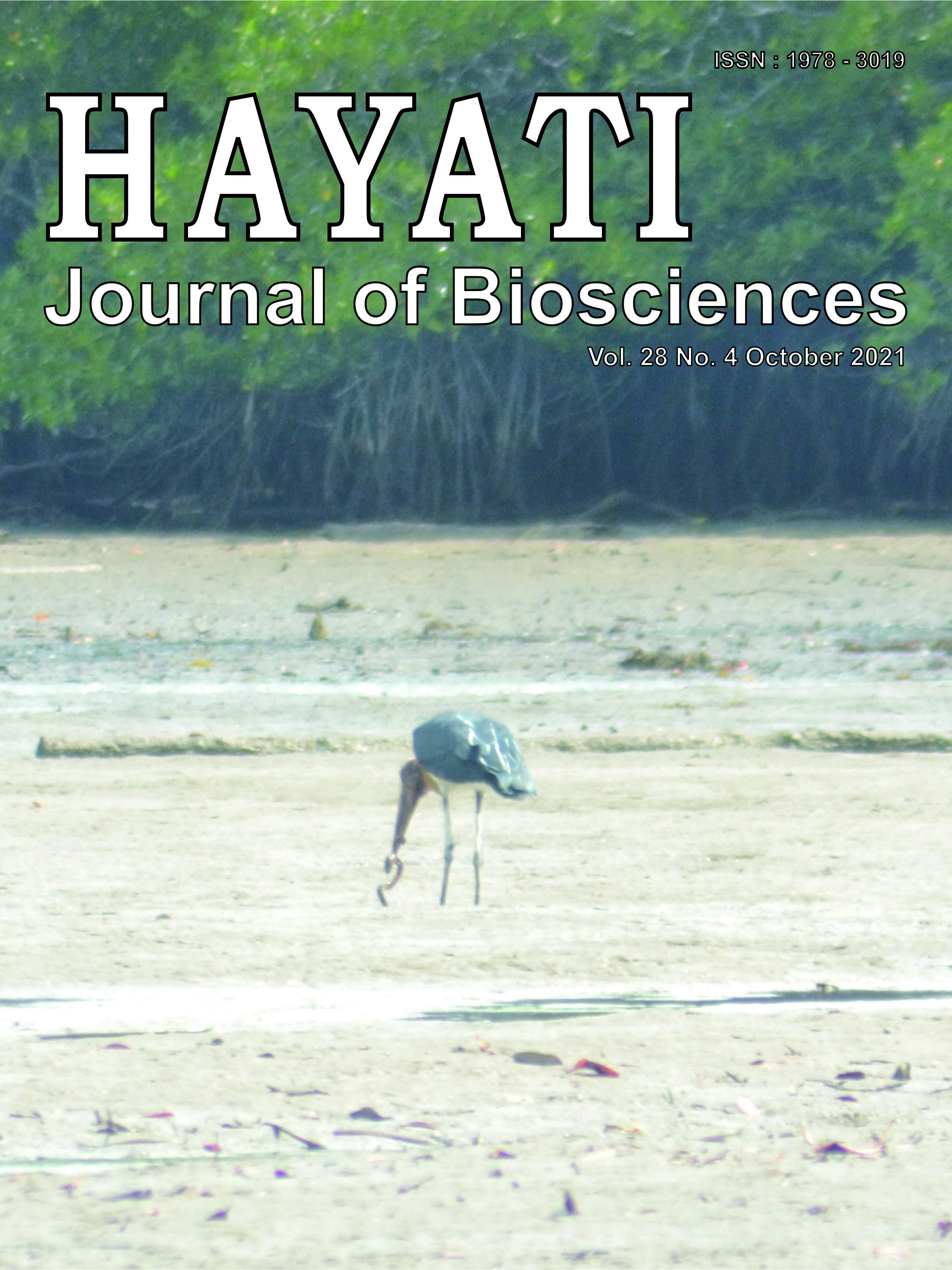Virulence and SSR Diversity of Brown Planthopper (Nilaparvata lugens) Adapted on Differential Rice Host Varieties
Abstract
Brown planthopper biotype 1, 2, 3 and a representative field population are required for resistance screening of promising rice lines in Indonesia, but the current biotype stocks has shown deviation in virulence patterns. The objectives of this study were to develop a set of brown planthopper populations with differential virulence and to investigate their genetic variability using SSR marker. Females originated from two field populations were selected on variety Mudgo (carries Bph1 gene) or ASD7 (bph2 gene) using honeydew excretion as the virulence parameter. Selection cycles resulted in population T, M, A, and R, which was raised and adapted on variety TN1 (carries no Bph gene), Mudgo, ASD7, and Rathu Heenathi (Bph3, Bph17), respectively. Population R was the most virulent as expected and can be used to represent a field population, but the remaining populations still showed high virulence level. AMOVA and PCoA results based on analysis with 38 SSR primer pairs revealed partial genetic separation among populations, with population R was the most genetically distant from the remaining populations. The desired virulence character of the remaining populations is expected could be achieved after further selection and prolonged adaptation on their respective hosts.
Downloads
Copyright (c) 2021 Chaerani, Ahmad Dadang, Sutrisno, Bahagiawati, Muhamad Yunus

This work is licensed under a Creative Commons Attribution-NonCommercial 4.0 International License.
HAYATI J Biosci is an open access journal and the article's license is CC-BY-NC. This license lets others distribute, remix, tweak, and build upon author's work, as long as they credit the original creation. Authors retain copyright and grant the journal/publisher non exclusive publishing rights with the work simultaneously licensed under a https://creativecommons.org/

























.png) IPB University
IPB University Department of Biology
Department of Biology The Indonesian Biological Society
The Indonesian Biological Society 

